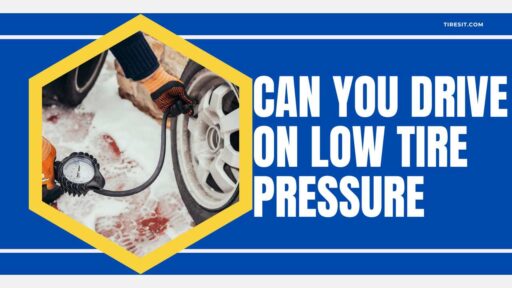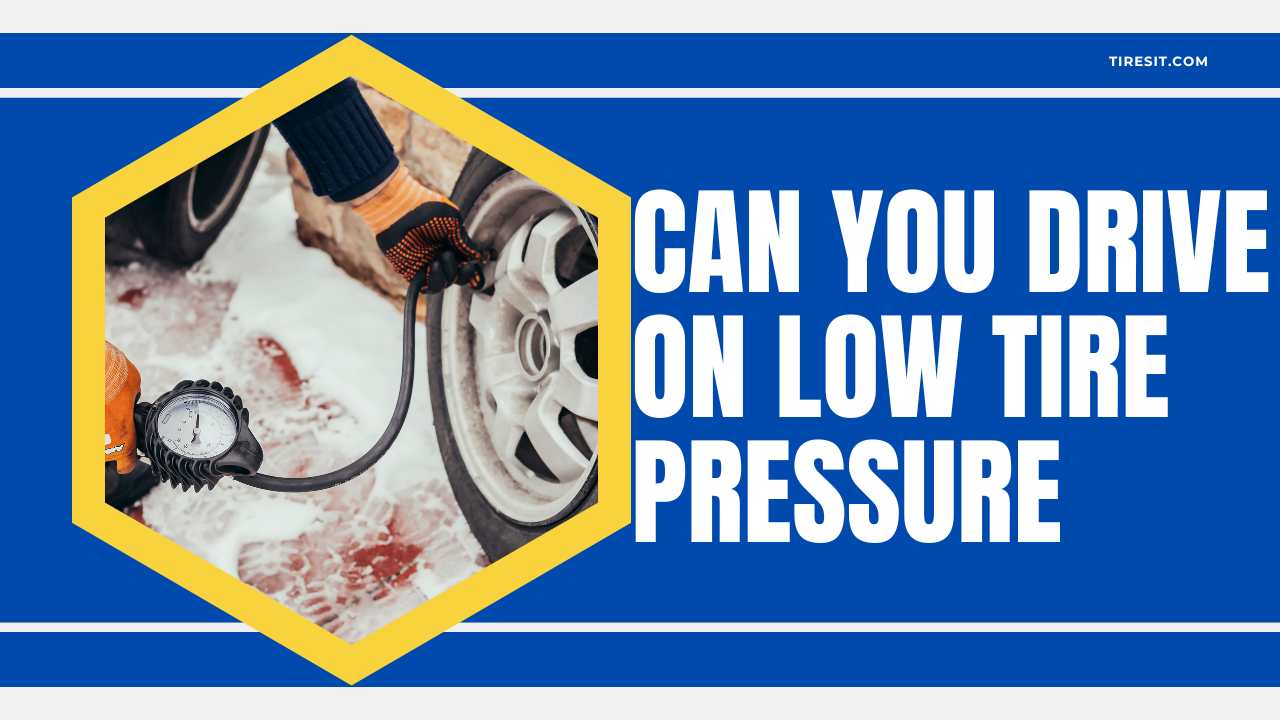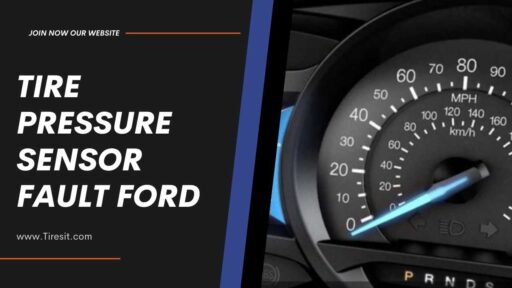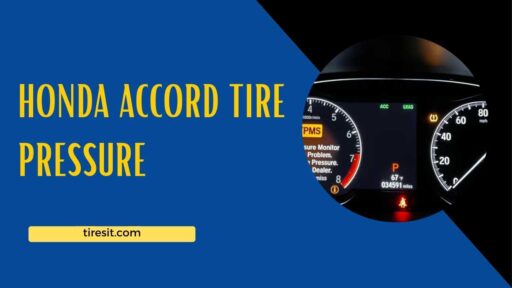Explore the effects of Can you drive on low tire pressure and find essential information on tire maintenance. Enhance your driving experience with our website’s valuable resources.
Driving with the right tire pressure is more than just keeping your car in shape; it is also a significant factor in road safety. This guide provides a step-by-step process for checking and inflating tire pressures so as to ensure that you, your passengers, and other road users remain safe. We will go through everything you need to know, from what happens when they are too low on air up to mistakes that must be avoided at all costs. If you are a newbie or an experienced driver who drives daily, then mastering this skill should be a top priority.
Understanding Ratings For Can you drive on low tire pressure
Before starting off with checking yours, it’s important to know what rating is recommended for your vehicle. Normally, this can be found in the user manual of your car, on a sticker located inside the driver’s side door, or even on one side wall of each tire itself. Air pressure is measured using PSI (pounds per square inch); thus, maintaining required PSI levels helps promote safety as well as ensuring maximum efficiency during use.
Driving around town with wrong air pressures not only makes accidents more likely due to reduced grip & longer stopping distances but also negatively impacts fuel consumption rates and the overall wear-out rate of tires. In particular, in cases where overinflation takes place, there could be uneven wear leading to blowouts, which may cause serious injuries, while under-inflated ones cause sluggish handling abilities coupled with high tire wear plus overheating problems. That said, it would, therefore, make sense for someone to keep monitoring their own frequently so as to always have them at the recommended level.
How To Check Your Tire Pressure
Checking tire pressures could never be easier since all that is required are simple tools that can either be found at home or at a gas station nearby. Here is what you need:
- A tire pressure gauge
- An Air Compressor (if necessary)
- Park the vehicle on level ground and turn off the engine.
- Unscrew valve stem caps from every tire.
- Place the Tire Pressure Gauge over the valve stem, then press down firmly until a slight hissing sound is heard.
- Take a reading displayed in PSI on the gauge and compare it with the recommended for your vehicle.
If lower than recommended, add some air using an Air Compressor or at a gas station. If higher, you may let out some by pressing down a small metal pin located right at the center of the valve stem using a pen or any other object with a similar shape.
Repeat these steps for all four tires, including the spare one.
Common Mistakes To Avoid
Checking tire pressure may seem to be one of those simple tasks performed frequently by drivers, but there are times when they get it wrong, thus failing to maintain proper levels. In order not to become such kind of driver, here are a few things that must never slip from your mind:
Do not rely solely on the TPMS of your car: Although tire pressure monitoring systems can come in handy sometimes, their reliability has often been questioned over time and hence should not be considered as the sole method for doing this check.
Never measure them when hot: Heat generated during the drive raises up pressures, hence giving false readings, which might mislead someone into thinking everything is okay while, in actual sense, they need more air.
Don’t forget about spare ones: Regularly inspecting them and always keeping adequate PSI will save you lots of trouble someday.
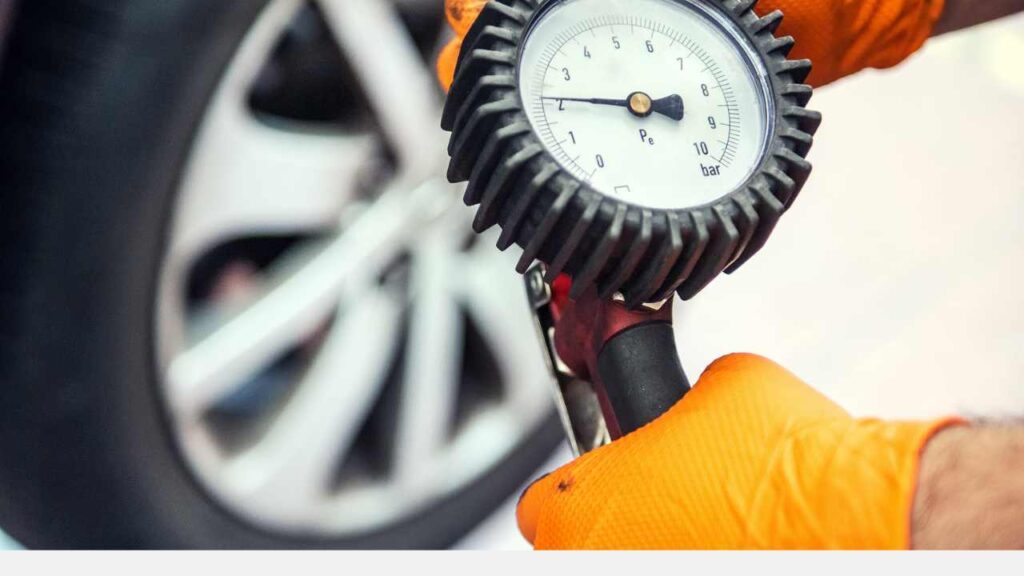
Credit: www.pexels.com
Understanding The Significance Of Proper Tire Pressure
This part highlights why maintaining correct ratings is important since it touches every facet that relates to driving, including safety precaution measures adopted, fuel consumption rates experienced, plus average lifespan recorded for various treads.
Benefits of Filling Tires with Nitrogen
Nitrogen-filled tires have become increasingly popular in recent years due to the many benefits they offer. Nitrogen is an inert gas that does not react with other elements or substances, making it ideal for tire inflation. Here are some advantages of using nitrogen instead of regular air for your tires:
Improved Fuel Efficiency
Using nitrogen in your tires can improve fuel efficiency by up to 6%. This is because nitrogen molecules are larger than oxygen molecules found in regular air, which reduces the rate at which they escape through the tire’s rubber walls. As a result, tires filled with nitrogen maintain their optimal pressure longer, reducing rolling resistance and improving mileage.
Better Tire Pressure Retention
Nitrogen is less likely to seep through tire walls compared to oxygen, which means that it helps maintain proper tire pressure for a longer period. Since underinflated tires increase rolling resistance and decrease fuel efficiency, having consistently accurate pressure levels can save you money on gas.
Enhanced Safety
Tires filled with nitrogen also provide better safety on the road. They maintain stable pressure even during extreme temperature changes caused by long drives or hot weather conditions. Stable tire pressure prevents overheating and sudden blowouts that could lead to accidents.
Longer Tire Life
Oxygen causes oxidation or rusting inside the rubber walls of a tire over time when exposed to moisture present in compressed air used for inflation. Oxidation weakens the structure of the tire, making it more susceptible to punctures or failure due to heat build-up during prolonged use. Nitrogen does not support combustion nor oxidize materials like oxygen does; thus, using this gas significantly increases overall lifespan expectancy since no internal degradation occurs within rubber compounds themselves.
Reduced Wheel Corrosion
Moisture contained in compressed air used during regular inflation can promote wheel corrosion by reacting with metal components such as rims or valve stems from within the wheels themselves, where they meet at the tire bead area. This corrosion weakens these parts, leading to air leaks or even complete failure of the wheel assembly over time. Nitrogen being dry eliminates the presence of any moisture, thus preventing such reactions from taking place and preserving the integrity of all metallic surfaces involved.
Environmentally Friendly
Nitrogen-filled tires are also environmentally friendly because they contribute to reducing greenhouse gas emissions that lead to climate change. Since nitrogen helps maintain proper tire pressure for longer periods, drivers will not need to visit fuel stations as frequently as when using regular air-filled tires. Fewer trips mean lower consumption levels per journey, resulting in reduced carbon dioxide released into the atmosphere during refilling exercises, which adds up significantly over an extended period.
Cost-Effective
Although some people argue that filling tires with nitrogen is expensive, it actually saves money in the long run due to increased fuel efficiency and extended lifespan expectancy. The initial cost of converting from compressed air to pure nitrogen may seem high at first glance – typically around $5 per tire or more, depending on the location and service provider used. However, considering potential savings achieved through reduced rolling resistance resulting from accurate pressure maintenance alone, this investment can outweigh this investment within just a few months for most drivers.
Steps in Inflating Your Tires
When you realize your tires need more air, you should inflate them. But there’s a way to do this right so as not to compromise their health.
Using an Air Compressor
Reliable pressurized gas dispensers can be found at petrol stations. Fill each wheel with the desired PSI while checking intermittently using your gauge.
Inflation Tips
Release air in short bursts so as not to overinflate. Overinflation can be just as dangerous as underinflation. If you happen to let too much out and the desired pressure isn’t reached, top it up again.
Don’t Forget About the Spare
People usually forget about servicing their spare wheels, but they form part of the safety inventory, too, to ensure its pressure is also correct.
Safety Tips for Driving with Proper Tire Pressure
At this point, when all your wheels have been inflated correctly, you might decide to hit the road immediately. However, maintaining such correctness throughout driving could prove difficult, especially when covering long distances. These tips will assist you to drive safely in the long run.
Regular Checks
Designate a day every month (or week if need be) on which to check your tire pressures without fail. This proactive strategy gives peace of mind by ensuring vehicle readiness before any trip commences.
Check Before Long Trips
The moment you decide to go on a long journey by car, always remember to check those pressures first things; extended hours spent driving might affect them significantly; hence, it’s better to deal with such in advance.
The Impact on Safety
Tires that have been properly inflated contribute greatly towards safer driving as they lower the chances of accidents occurring while enhancing control over vehicles and fuel economy. Additionally, even thread wear is guaranteed, thus promoting the longevity of your tires.
Common Mistakes When Checking or Inflating Tire Pressure
These are some mistakes people make during this exercise, which can lead to dangerous road situations.
Ignoring the Spare
Always involve your spare wheel when checking for inflatedness; one never knows when it might be needed most; hence, one should always be prepared adequately.
Overinflating
A lot of individuals think that higher performance levels are achieved through over-inflating, but such an assumption is incorrect because grip on roads reduces, thereby affecting both handling capability and braking efficiency negatively.
Faulty Gauges
Use a tire pressure gauge that gives accurate readings every time used; unreliable ones pose a risk to personal safety due to wrong data provided about actual conditions prevailing within tires themselves at any given moment.
Visual Inspection
Just looking at them doesn’t mean all tires will appear fine since there could still exist those that seem alright externally yet lack adequate internal air content necessary for proper functioning while driving, so do not solely rely upon appearances when assessing their state vis-à-vis inflation requirements.
Tire Sidewall Numbers
Those numbers imprinted along various sections found around sidewalls of different types/brands represent the maximum pressures each tire design can handle safely under normal circumstances, i.e., they don’t indicate appropriate psi values per se applicable universally across all cars or trucks, etcetera thus should not be taken as such because this would lead into serious error whereby one might end up inflating far beyond what is actually needed by specific vehicles involved thereby causing potential blowouts, etc.
Inconsistent Checks
Make sure you check frequently, especially after experiencing drastic weather changes like moving from extremely cold temperatures to extremely hot ones and vice versa.
FAQs
Do I need to rotate my tires, and if so, how often?
You need to rotate your tires because you want them to wear evenly. However, this can differ depending on the kind of vehicle and its usage, with 5000-7000 miles being the most common range. You should refer to your car’s manual or consult a professional mechanic for more specific advice.
What do I do if my tire is damaged?
If you notice any signs of significant wear like deep cuts, bulging areas, or bald spots, then it’s important that you get them checked out by an expert as soon as possible; in some cases, they might suggest repairs, while other times, replacement will be deemed necessary so as not jeopardize your safety when driving.
Conclusion of Can you drive on low tire pressure
Looking after one’s tires is an integral part of maintaining a vehicle; it ensures that you are safe on the road and also gives a smooth ride. Besides this, knowing what mistakes people commonly make in relation to tire care, as well as implementing good practices, could see them serve longer, thereby saving money meant for replacements along with preventing accidents while traveling. So don’t forget about Can you drive on low tire pressure next time before hitting the road! Have a great journey!

